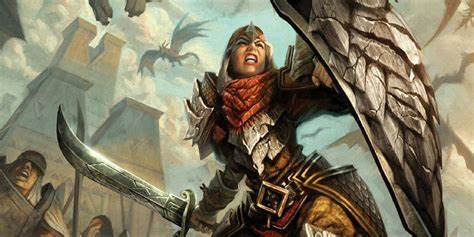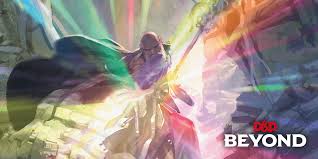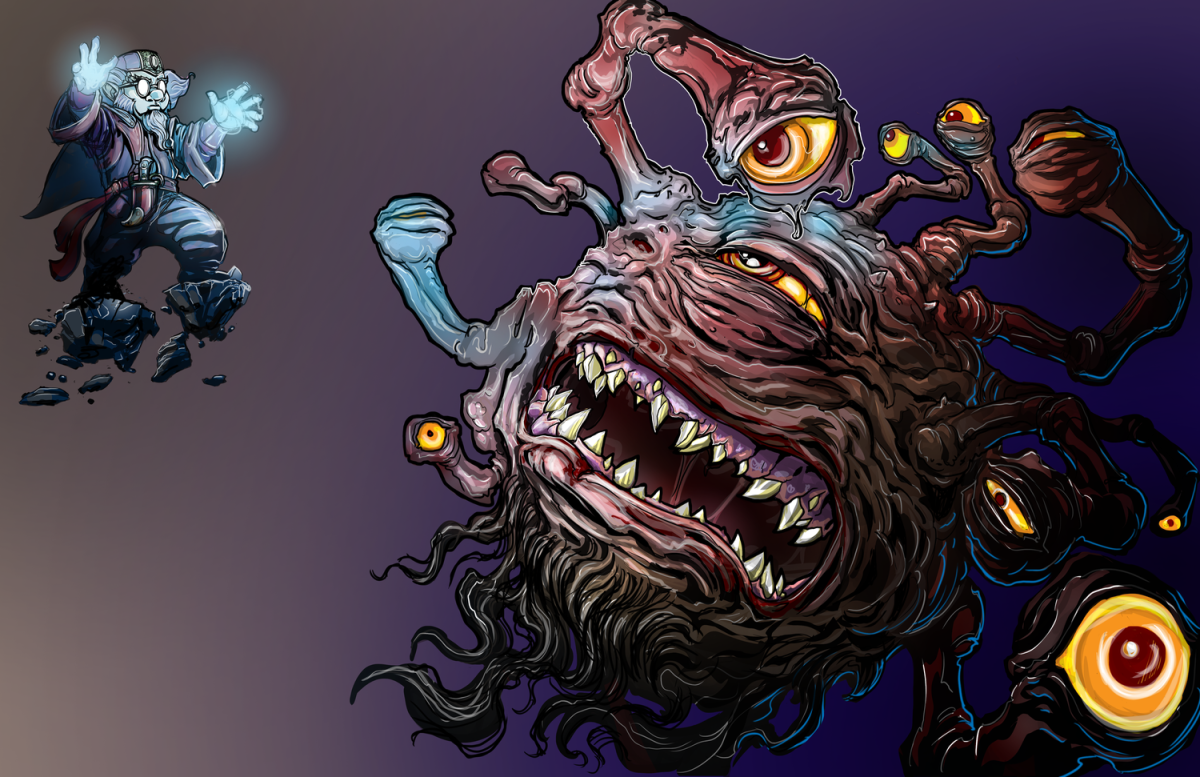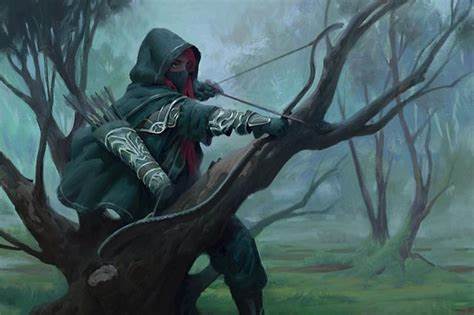The Paladin is one of the most iconic classes in Dungeons & Dragons 5th Edition (D&D 5E), combining divine magic with martial prowess. Known for their dedication to a sacred oath, Paladins serve as champions of their chosen ideals, wielding both steel and holy power to protect the innocent and smite evil. If you’re new to D&D or looking for a powerful, inspiring character to play, this guide will help you create and play a Paladin in D&D 5E.
What is a Paladin in D&D 5E?
Paladins are divine warriors, driven by a powerful oath that binds them to uphold their beliefs. They are skilled in both melee combat and divine spellcasting, making them adaptable on the battlefield and resilient protectors of their party. Unlike Clerics, whose power is drawn directly from their deity, Paladins follow an oath that grants them their divine strength. Whether you’re playing a noble knight, a devout avenger, or a sworn protector, Paladins are a class of high ideals and righteous power.
Step-by-Step Guide to Creating a Paladin
1. Choose Your Paladin Subclass (Sacred Oath)
At 3rd level, you will choose your Sacred Oath—a unique subclass that shapes your character’s divine path and powers. Each oath represents a different ideal or goal, providing your Paladin with unique abilities, spells, and role-playing opportunities. Here are some of the most popular options:
- Oath of Devotion: The traditional, classic Paladin dedicated to upholding justice and virtue. They are well-rounded warriors, with abilities to turn undead, cleanse the unholy, and protect their allies.
- Oath of the Ancients: These Paladins honor nature and life, wielding ancient magic to protect the natural world. They have abilities that protect against magical harm, making them highly resilient.
- Oath of Vengeance: Vengeance Paladins are relentless avengers who pursue justice or revenge against evil. They have powerful features that help them hunt down foes and deal devastating damage, making them a popular choice for offensive-focused players.
- Oath of Conquest (Xanathar’s Guide to Everything): Conquest Paladins are conquerors who spread fear among their enemies. With abilities that combine control and damage, they are excellent battlefield controllers.
- Oath of Redemption (Xanathar’s Guide): Redemption Paladins seek to resolve conflict peacefully and protect the innocent. They excel at non-lethal combat, focusing on defense and restorative powers.
Each Sacred Oath gives your Paladin different spells, abilities, and combat tactics. Choose one that best fits your character’s personality and the role you want to play in the party.
2. Choose Your Race
As a Paladin, you’ll benefit from a race that boosts Strength (for melee attacks) or Charisma (for spellcasting and class abilities). Some good options include:
- Dragonborn: With bonuses to Strength and Charisma, Dragonborn are a popular choice for Paladins. Their breath weapon also adds an elemental option to their attack.
- Half-Elf: Half-Elves receive a bonus to Charisma and two other abilities of your choice, making them flexible and ideal for a Paladin focused on versatility.
- Human (Variant): With a flexible stat boost, a free feat, and a bonus skill, Variant Humans are always a strong choice for customizing your character.
- Aasimar: These celestial beings have a natural connection to the divine, with bonuses to Charisma and some racial spells that complement Paladin abilities well.
- Dwarf: For a tanky Paladin build, Mountain Dwarves provide a bonus to Strength and Constitution, and Hill Dwarves get extra hit points, adding to your durability.
Choose a race that enhances your main abilities and aligns with your character’s backstory and goals.
3. Ability Scores and Skills
Paladins are front-line fighters and spellcasters, so your main ability priorities will be Strength or Dexterity (for attacks), Charisma (for spellcasting), and Constitution (for durability).
A typical Paladin’s ability score priority might look like this:
- Strength (for melee combat and attacks) or Dexterity (if you’re building a ranged or finesse Paladin)
- Charisma (for spellcasting and class abilities like Divine Smite and Lay on Hands)
- Constitution (for extra hit points and resilience in battle)
Skills: As a Paladin, you have proficiency in two skills from Athletics, Insight, Medicine, Persuasion, and Religion. Choose skills that complement your role:
- Persuasion and Insight are useful for interactions and role-playing, helping you negotiate or uncover hidden motives.
- Athletics is valuable for a front-liner, useful for grappling and other physical feats.
- Religion can reinforce your divine background and help with identifying divine and unholy presences.
4. Paladin Class Features
The Paladin class has some unique abilities that make it both a potent melee fighter and a holy protector of the party.
- Divine Sense: At 1st level, this ability allows you to detect celestials, fiends, and undead, useful for tracking enemies and recognizing supernatural threats.
- Lay on Hands: Your core healing ability, allowing you to heal or remove disease/poison. It’s especially useful for keeping yourself and allies alive in tough battles.
- Divine Smite: One of the most powerful abilities in D&D 5E, Divine Smite lets you add radiant damage to your melee attacks by expending a spell slot, dealing extra damage to enemies (especially undead and fiends).
- Aura of Protection (6th level): You and allies within 10 feet (30 feet at higher levels) gain a bonus to saving throws equal to your Charisma modifier, making you a strong defensive support.
5. Spellcasting and Smite
As a half-caster, the Paladin gains spells at 2nd level, using Charisma as their spellcasting ability. While Paladins don’t have as many spells as full casters, their spell list includes powerful buffs, healing, and utility spells.
Key Paladin Spells:
- 1st Level: Bless (buffs your party), Shield of Faith (increases AC), Cure Wounds (healing).
- 2nd Level: Lesser Restoration (removes conditions), Find Steed (summons a loyal mount), Zone of Truth (forces honesty).
- 3rd Level: Revivify (revives a fallen ally), Aura of Vitality (ongoing healing), Spirit Guardians (area of effect damage and control).
Divine Smite is a unique mechanic for Paladins, allowing them to use spell slots to deal radiant damage when they hit with a melee weapon. This feature is one of the main reasons Paladins are among the highest damage-dealers in the game.
Consider holding back some spell slots for Divine Smite, especially when facing undead or fiends, who take extra damage from radiant energy.
Playing Your Paladin: Role-Playing and Combat
1. Role-Playing Your Oath
A Paladin’s Oath is a core aspect of their character. Each oath represents a moral code or a guiding purpose, shaping your character’s personality and decisions. Here’s how you might role-play each oath:
- Devotion: Your Paladin believes in honor, justice, and protecting the innocent. You’re likely to hold yourself and others to high moral standards and strive to be an example of virtue.
- Ancients: Your Paladin is a guardian of life and nature. You might speak out against unnecessary violence, protect sacred places, and have a deep respect for nature.
- Vengeance: Your Paladin is driven by a desire to punish wrongdoers. You’re often ruthless against those you deem evil, prioritizing justice or revenge above mercy.
- Conquest: You seek to dominate and spread fear in the hearts of your enemies. You’re not just a protector but also an enforcer, seeking to bring order through strength.
- Redemption: You aim to save and redeem others, avoiding combat when possible. You’re likely to seek peaceful solutions, striving to show mercy and forgiveness.
2. Combat Strategy
Paladins excel in close-range combat and have strong defensive abilities that make them durable front-line fighters. Here’s how to play your Paladin effectively in battle:
- Use Divine Smite Wisely: Divine Smite is your best damage-dealing option, but it consumes spell slots, so use it strategically. Save it for powerful foes or when you know you’ll need a high burst of damage.
- Buff and Protect: Use spells like Bless, Shield of Faith, and Aura of Protection to bolster your allies. Paladins excel at providing protective auras and buffs that help keep your party safe.
- Focus on Big Threats: Paladins are excellent at taking down priority targets, especially evil creatures. Use your high damage potential and smites to focus on powerful enemies like bosses or spellcasters.
3. Healing and Support
As a Paladin, you’re often the secondary healer in the party. Use Lay on Hands for emergency healing and spells like Cure Wounds to keep allies on their feet. Even though you’re not a primary healer, your abilities can make a huge difference when a party member is in trouble.
Conclusion
Playing a Paladin in D&D 5E offers a rewarding mix of combat power, role-playing depth, and divine purpose. Whether you’re a righteous knight, a nature’s guardian, or an avenging force of justice, the Paladin allows you to embody your chosen ideals with strength and conviction.
With a solid understanding of your subclass, spellcasting, and role-playing options, your Paladin will be a shining example of heroism, both on and off the battlefield.












